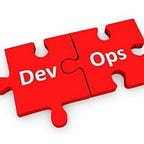Cross-Region AWS EFS Data Transfer Using AWS DataSync
How to Provision source and destination locations for AWS EFS and transfer data with AWS DataSync.?
Background
AWS DataSync makes it simple and fast to move large amounts of data between on-premises storage and AWS. DataSync makes it easy for you to move data by automating both the management of data transfer processes and the infrastructure required for high-performance, secure data transfer.
we can use data sync to operate copying files securely between two amazon efs within different regions. DataSync is also used to achieve one-off migrations
Also, DataSync is assumed to be 15 times faster than other tools available.
In this journal, we’ll give stepwise orient the way to transfer knowledge between associate degree AWS EFS in one AWS Region to associate degree AWS EFS in another AWS Region.
To being, you’ll have associate degree Amazon AWS account, and supply and destination AWS EFSs organized in 2 completely different AWS Regions.
How to Transfer Data EFS-to-EFS Within Cross Region
Deploy the DataSync Agent
- Deploy the agent in the source region that has access to both the source and destination EFS. Go to the AWS Agent AMI List and select your AMI by AWS Region. For us-west-1, click on the Launch instance in front of the us-west-1.
2. Choose the type of instance you require as per details.
- m5.2xlarge — Transfer up to 20 million files.
- m5.4xlarge — Transfer more than 20 million files.
3. Select “VPC” where your source EFS file system is located. choose “Auto-assign Public IP” to “Enable.”
4. Select “Next: Add Storage
5. You must assure that the security group allows inbound access to HTTP port 80 from the web browser that is being used to operate the agent.
Port 2049 is being used as a standard by NFS, Select on Launch button
Activate the AWS DataSync Agent
- The first step we would do here is we will visit the activation screen and enter the agent’s IP/domain name in the Agent address box and choose to achieve “Get key.”
- Once it's activated, the key will be visible on the screen. In case of the activation fails, we would just go and check the agent's security group is configured properly or not.
- If things look great just “Create agent.”
Configure the Locations for Source and Destination
How to provision a source location:
- Search on the Location page, click on “Create location.”
- Then you must choose “NFS server” from the Location type available to you on the screen.
- You must then choose your Agents from the given list.
- You must then enter the IP address of the source EFS address For the NFS server you have chosen.
- For “Mount path, enter “/”; if you want all the files, otherwise select your desired path as mentioned.
- Finally, select “Create location.”
How to Provision a destination location:
- Same as above on the Location page, select “Create location.”
- Choose “EFS” from the Location type available as same you did for source .
- Choose your EFS File System from the list available to you.
- Enter the IP address of the source EFS address, For the NFS server.
- For the “Mount path,” I, enter “/” f you want the files to be copied to the root directory otherwise determine a path.
- Select “Create location.”
How to Create a Data Transfer Task?
- Choose “Task,” From the navigation pane and select “Create task.”
- Choose an existing location and select the source location we created above on the “Configure source location” page.
- Select “Next” and you will be asked to select a destination. Select an existing location and select the destination location we created above for the same task.
- Select “Next” and Provide a name for the “Task Name.”
- Select “Next” and “Create task.”
Start the Transfer
From the navigation pane, choose “Tasks,” select your task, and click on “Start” to start data transfer.
👋 Join us today !!
️Follow us on LinkedIn, Twitter, Facebook, and Instagram
If this post was helpful, please click the clap 👏 button below a few times to show your support! ⬇
